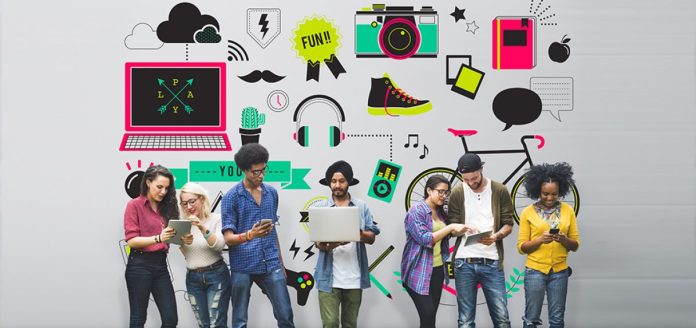
For nearly two centuries, the majority of the learning models have remained almost the same, revolving around the traditional classroom system. However, the 21st century is witnessing a significant change in the education industry with the emergence of education technology. And the COVID-19 pandemic has shown us how badly we need a change in our education models.
Education technology is taking the world by storm, and experts believe that the global edtech market is expected to grow from 85,818 million US dollars in 2020 to 181,265 million US dollars by 2025. If you are currently working in the education industry, you need to watch out for these 7 education technology trends which are gaining momentum in 2020.
Video-based learning:
Video is one of the most heavily consumed content formats in today’s date. More than 2.3 billion people are active on YouTube, where they watch various video Conferencing for education and entertainment purposes. It is high time that we pay attention to using videos as a de facto medium for learning purposes. Instead of reading long paragraphs, students can watch videos for better understanding.
Higher education institution is most likely to invest in developing educational and interactive videos to make learning more interesting. With time, video production and distribution/ hosting online are becoming more cost-effective. So, we will definitely see a boost in the segment of video-based learning in 2020 and beyond.
Blockchain:
There has been a lot of buzz regarding the use of blockchain in the higher education sector. Over the past few years, blockchain has provided great collaboration and secure data opportunities for businesses as well as individuals.
Since students and universities now deal with a lot of data on the internet, the adoption of blockchain technology can be used to make the systems more secure. Blockchain technology can further help the digital storage of academics information, allowing access only to authenticated users.
Online assessments:
The new models of technology-based assessments are receiving much more attention these days. They are helping educators provide more continuous and adaptive formative assessments. The online assessment solutions are customisable, flexible, secure and interactive. Not to forget, online assessment can be done remotely which is ideal for situations like the one we are in right now.
Since the online testing modules can be changed easily, they can help the learners to evolve with the constant change. As more online tools emerge, the online assessment may become the standard testing device for the education system all over the world.
Self-paced learning:
Self-paced learning is one of the major features that separate online learning from traditional learning. A lot of universities have come up with their full-time online courses, where students can study at their own pace. Moreover, the entire evaluation takes place using online assessments.
There is no traditional teaching involved, and students are more likely to grasp concepts with personalised learning methodology. Higher education institutions are, in fact, coming up with several courses and certification programs that are exclusively taught in online mode. Students can record the lectures, take part in the live chat with instructors and do much more.
Data-driven analysis of students:
It is believed that data analysis with the help of Machine Learning can be useful for higher education. You must agree with the fact that manual evaluation and feedback mechanism based on subject assessments are biased and have their own limitations. Data-driven analysis can help eliminate that biasness and limitations while maintaining historical data of the student.
Moreover, the data can be further used to predict the future performance of the group of students as well as individuals. Such information can help the higher education institutions to prepare students for that future accordingly.
Internet of Things (IoT):
IoT devices and technology are gaining a lot of popularity these days. This technology can be used by higher education institutions to establish a secure campus environment with advanced face recognition techniques. Moreover, the institutes can develop smart campuses with the help of such technology.
In addition, IoT can also help track the total time taken by the learners to complete a certain assignment. Based on that data, the institute can give a better understanding of the time required by the students for completing such all assignments. Moreover, it can help compare class performance.
Immersive learning:
As AR and VR technologies continue to evolve, they are creating enormous opportunities for immersive learning. While such technologies are mostly being used for gaming, they have the potential to offer great educational experiences as well. By helping students become a part of the narrative and drawing their own conclusions, students can learn more about things.
Now that most of the schools and college campuses remain shut, these higher education institutions can arrange virtual field trips using VR and AR technologies. Also, they can be used to improve the distance learning outcomes and help teach the learners complex concepts with an immersive experience.
In conclusion,
There’s no denying that the technological innovations in education have opened up a new world of possibilities for the learners, allowing them to experience learning in a way that they can enjoy. As an educator, you need to focus on these trends and start adopting them if you want to facilitate an advanced learning environment for the learners.








